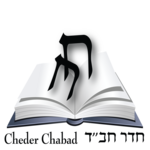Dear Readers,
“My children are constantly fighting,” laments Susan, a mother of three. “They bicker about the size of their dinner portions. They argue over whose turn it is to do a chore. They fight over who is smarter or friendlier. Will there ever be peace in my home?”
This week’s Torah reading records the momentous event of the Jewish people receiving the Torah.
“In thethird monthafter the exodus . . . they came to the desert of Sinai . . .and Israel encampedthere opposite the mountain.”(Exodus 19:1–2)
The Midrashnotes: Elsewhere it is written, “theytraveled . . .they encamped” in the plural, meaning with dissenting opinions. Here, however, it is written “and Israel encamped,” in the singular form, since all were equally of one heart.
The Torah, whose purpose is to bring peace, was given in the third month because the number three teaches the value of diversity.
“One” implies a single reality and suggests absolute conformity. “Two” indicates divisiveness and disparity, as in two opposing, rival approaches. “Three” finds an underlying unity between disparate entities.
The Torah wasn’t given in the first month, which suggests exactness and conformity. While the Torah expects law and order, it respects our individual natures and our creative expressions.
Conflict arises between people when conformity is demanded. As a parent, do you say: “The rules in this house are that everyone must strictly follow this routine”? What if a child isn’t able to follow a set regimen, a firm schedule or an inflexible list of expectations?
The Torah wasn’t given in the second month of the year, indicative of two rivaling opposites.
Conflict arises when people feel that they are being compared to, or “pitted” against, each other. As a parent, do you ever say: “Why can’t you be like your sister, whose room is always so neat?” or “Why doesn’t your brother ever need to be reminded to do his chores?”
One of your children may be particularly neat, while another might be highly creative. Contrasting the two is not only unfair; it can be destructive.
The Torah, whose purpose is peace, was given in the third month. The message of “three” is the beauty of a world with endless possibilities, nuances and talents coming together in the harmonious goal of creating greater goodness.
Teach your child the power of three:
- To appreciate himself for whom he is—not by comparing himself to another, nor by judging himself against a rigid set of expectations.
- To value the special qualities that he has, rather than see himself as lacking a certain quality.
- To work with others doesn’t diminish him, but rather helps him and those around him achieve a greater, common good.
Our mission as parents is to utilize the power of three—to uncover and actualize the special talents and contributions of all of our children.
Chana Weisberg
Editor, TJW



